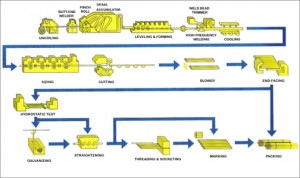Galvanizing was known to the world from the beginning of 17th century. It is essential for iron and steel in protecting their life and utility. Science and technology has developed the process of Hot Dip Galvanizing in the 18th century in USA. The first hot dip galvanized iron sheets were imported to Australia in the 1850s. The molten zinc was found to react with steel to form a metallurgical bonded protective coating that had more durability to any other coatings for atmospheric exposure.
The characteristics of the coatings applied by these continuous galvanizing technologies are quite different to those of coatings applied by the traditional batch in galvanizing process.While all early hot dip galvanized items were manufactured by dipping them in batches in a molten zinc bath. Different technologies have been developed to more efficiently apply zinc-based coatings to continuously manufactured products such as wire, sheet and tube.
The main difference in the nature of these galvanized coatings is the time that the steel is immersed in the molten zinc alloy. This time is very short (a few seconds) in continuous galvanizing processes, and much longer (4 to 8 minutes) in the hot dip galvanizing process. The resulting zinc-based coatings produced by these processes are quite different and lesser than hot dip galvanizing in their characteristics and performance.
The hot dip galvanized coating is the result of a metallurgical reaction between the steel and the molten zinc, and this reaction will not occur if the steel’s surface is contaminated with paint, grease, oil or rust.Steel fabrications or sections are delivered to the galvanizing plant. These items may contain steels of differing chemistry and surface condition and may be coated with pre-construction primers or other applied protective coatings, including continuously applied zinc coatings.
For this reason, the pre-treatment of the steel sections or fabrications to remove grease, oil, paint and rust is critical to the successful application of the galvanized coating. Acid pickling is done after degreasing and paint removal. Remaining process go through pre-fluxing, galvanizing and quenching. Inspection and dressing is the final process of hot dip galvanizing.
